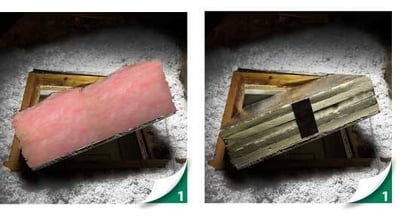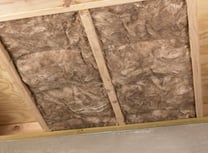Would it surprise you to learn that among the top 10 reasons cited for a failing a final new residential home inspection is missing insulation in the attic access or floor? Improperly installed insulation is an inconvenient problem that can be fixed relatively easily, but insulation that’s completely missing on a final inspection can cost additional time and money for the builder. There’s a simple solution to avoiding this: a checklist and quality control review before final inspection.
Who’s your point-person?
Any builder who’s paying for insulation expects it to be installed, but if there’s no point-person responsible for ensuring that it is, how will the builder know? With tight schedules, multiple inspections in large developments, and limited people resources, it can be difficult to find time to conduct a walk-through of each home after the insulation job has been completed. However, some contractors swear by it. That inspector could be the builder’s superintendent or a quality control point-person who works for the insulation contractor. They should be checking that insulation is installed properly in every location where it should be in a home, including the attic access and floors.
Proper installation for the attic access
 Attaching insulation to an attic hatch can be done in several ways. The first is to permanently attach batt insulation to the attic access hatch (shown left). Another option is to attach rigid insulation to the hatch (right). The goal is to have the insulation remain in place with repeated uses of the hatch by the homeowner. A dam should also be installed around the access hatch to protect the surrounding insulation, and weatherstripping should be installed on the access trim to verify the seal. Each of these steps is covered in detail, including photos in our Tech Tips and Critical Details publication.
Attaching insulation to an attic hatch can be done in several ways. The first is to permanently attach batt insulation to the attic access hatch (shown left). Another option is to attach rigid insulation to the hatch (right). The goal is to have the insulation remain in place with repeated uses of the hatch by the homeowner. A dam should also be installed around the access hatch to protect the surrounding insulation, and weatherstripping should be installed on the access trim to verify the seal. Each of these steps is covered in detail, including photos in our Tech Tips and Critical Details publication.
Proper installation for the floors
 Although a few more steps are involved with installing floor insulation when compared to insulating attic hatches, detailed and precise work is simpler with advance preparation, including ensuring that the insulation for the floors is the correct width and R-value for the location and that the necessary fire blocking and draft stops have been installed prior to installing the batts.
Although a few more steps are involved with installing floor insulation when compared to insulating attic hatches, detailed and precise work is simpler with advance preparation, including ensuring that the insulation for the floors is the correct width and R-value for the location and that the necessary fire blocking and draft stops have been installed prior to installing the batts.
Kraft-faced batts should be installed on the warm-in-the winter side of the cavity and friction fit between and parallel to the floor joist framing. The insulation should extend to the outside edge of each joist bay and wire fasteners should be used to support the insulation so that it is in full contact with the subfloor.
Check the job
One final inspection post-installation of the insulation is always a good idea as it can help avoid delays and potentially costly call backs. Obviously, though attic hatches and floors are common locations for missing insulation, there are other areas that you should inspect as well. Our 25 Checkpoints for Inspecting Insulation Jobs gives tips on how to inspect home insulation jobs in new construction to ensure a thorough and complete job.





